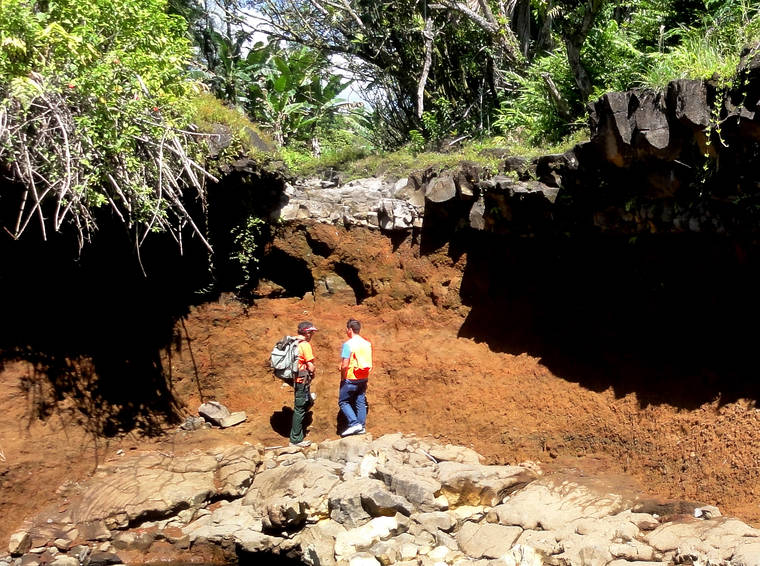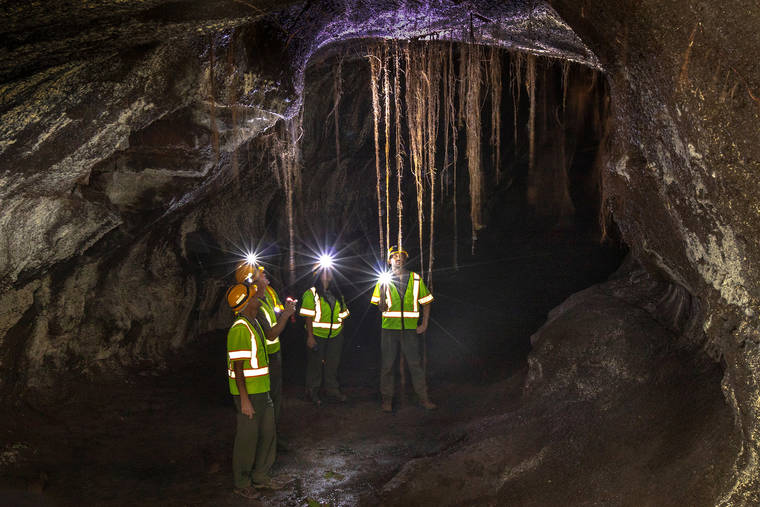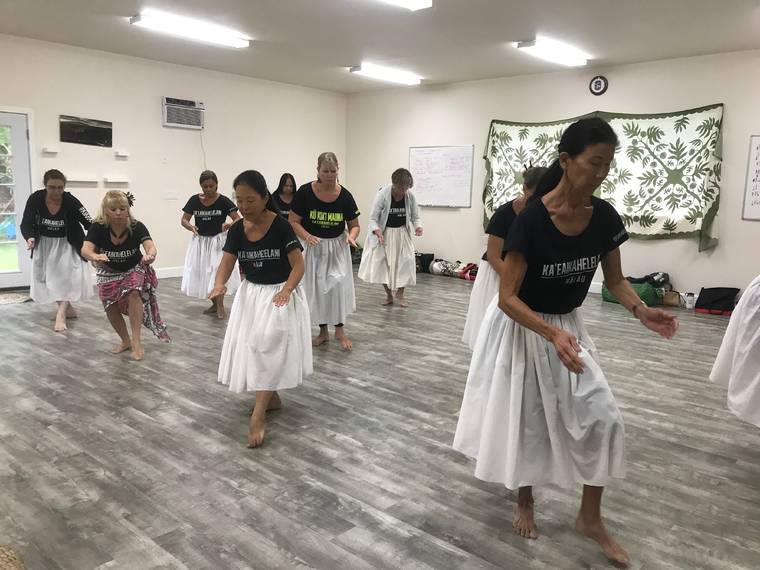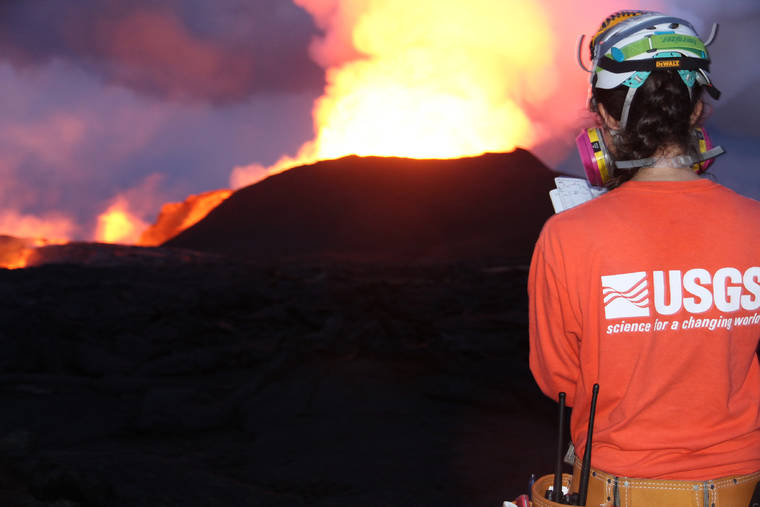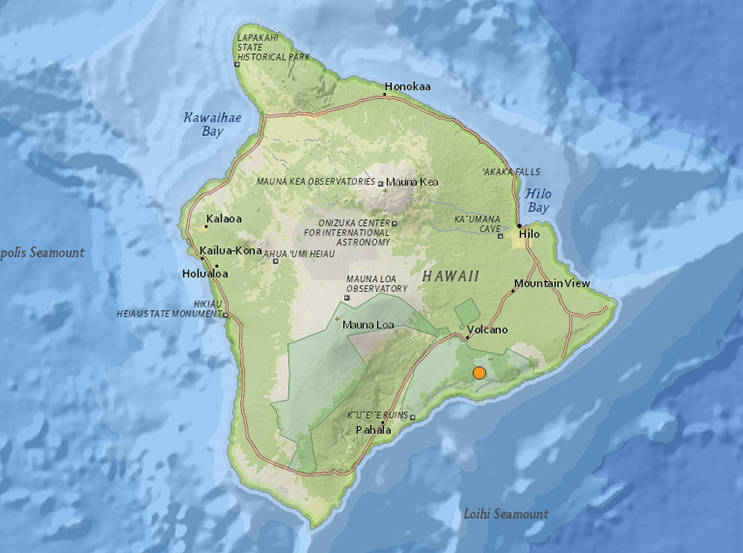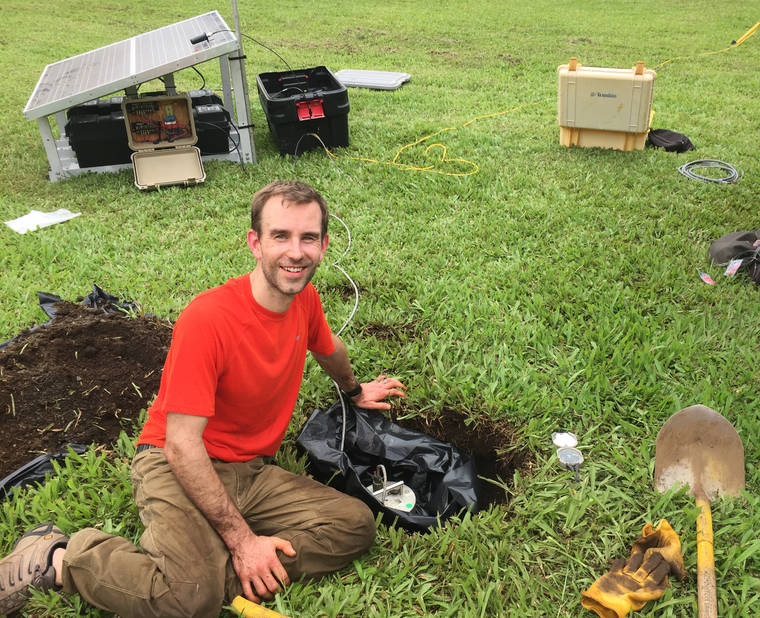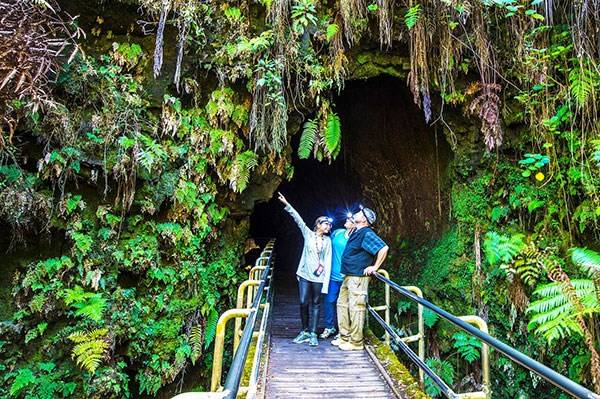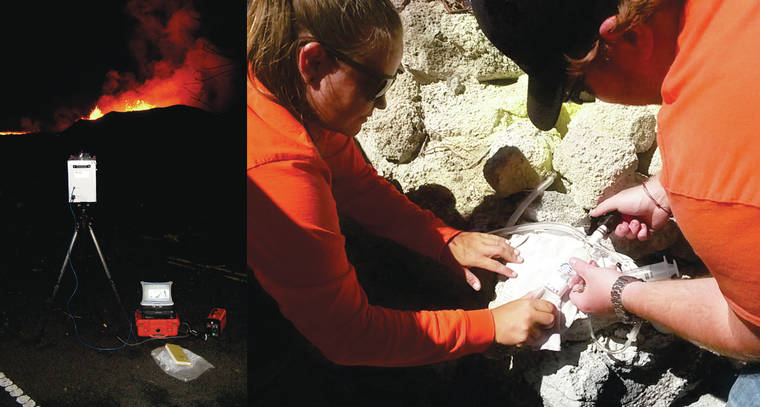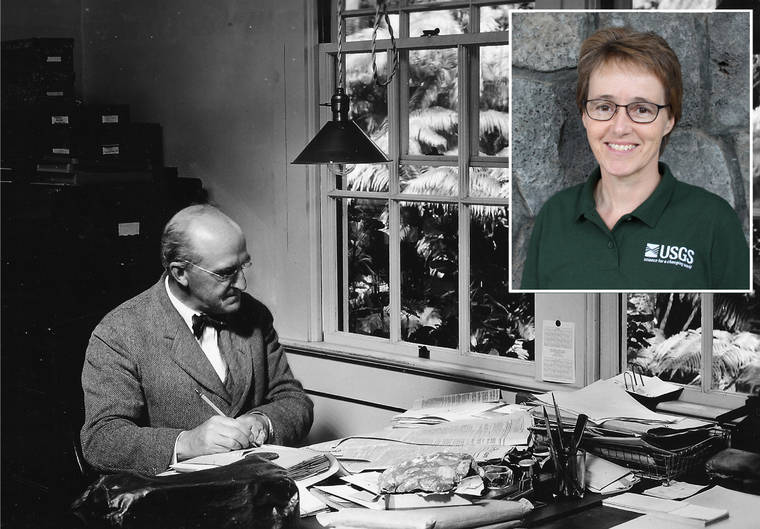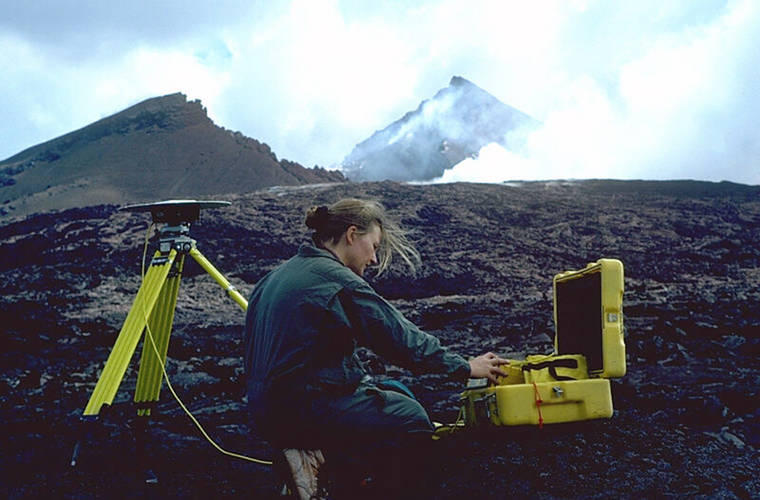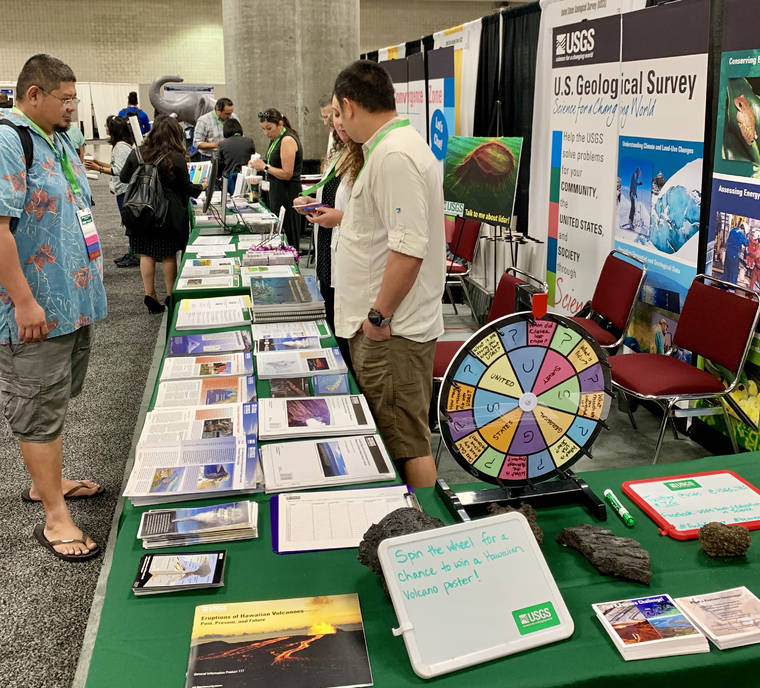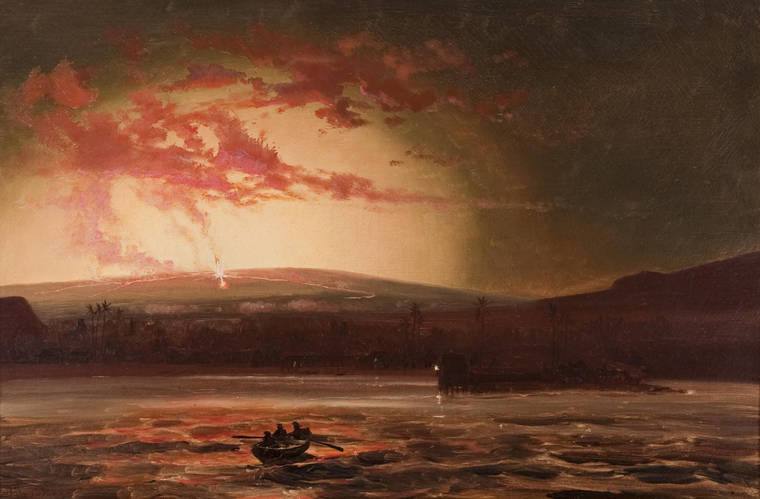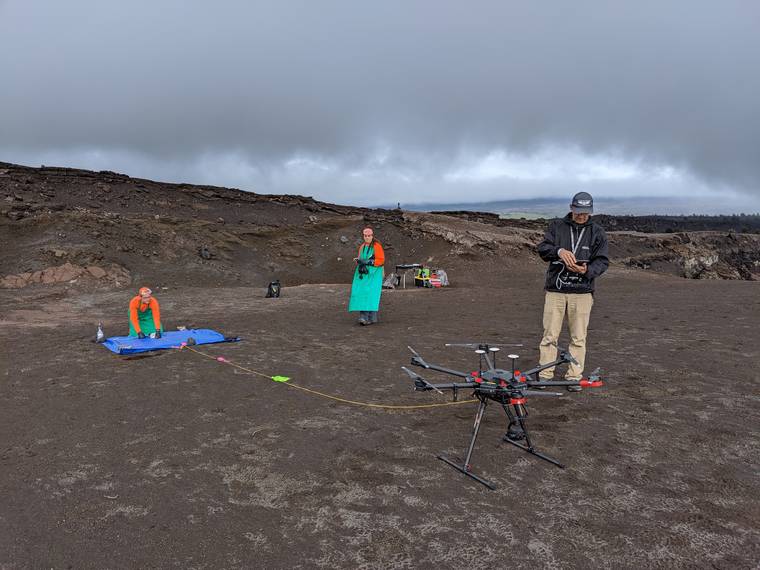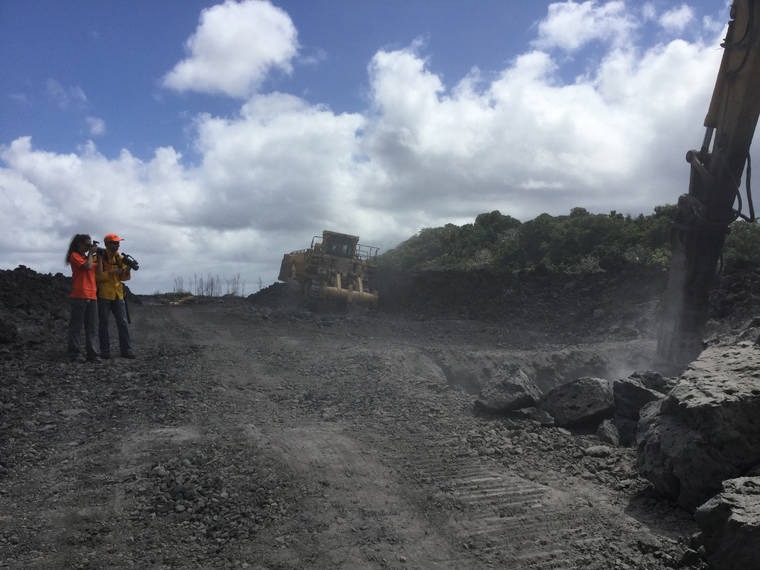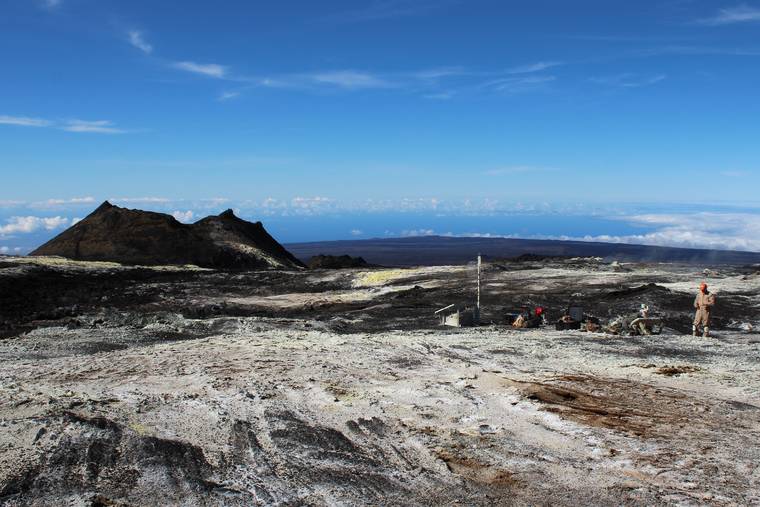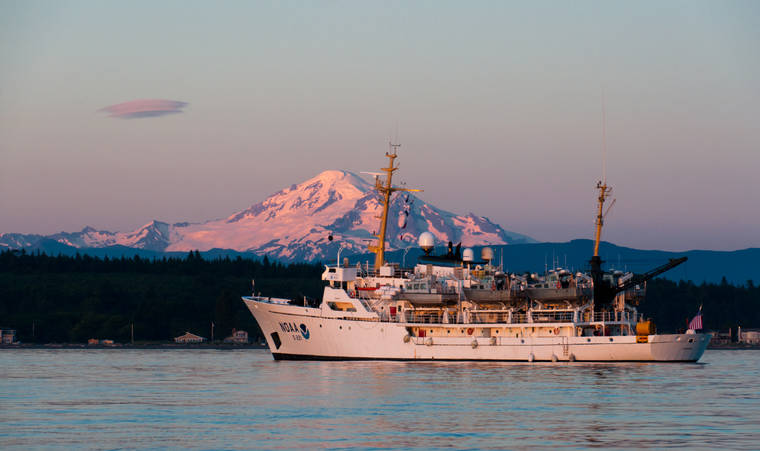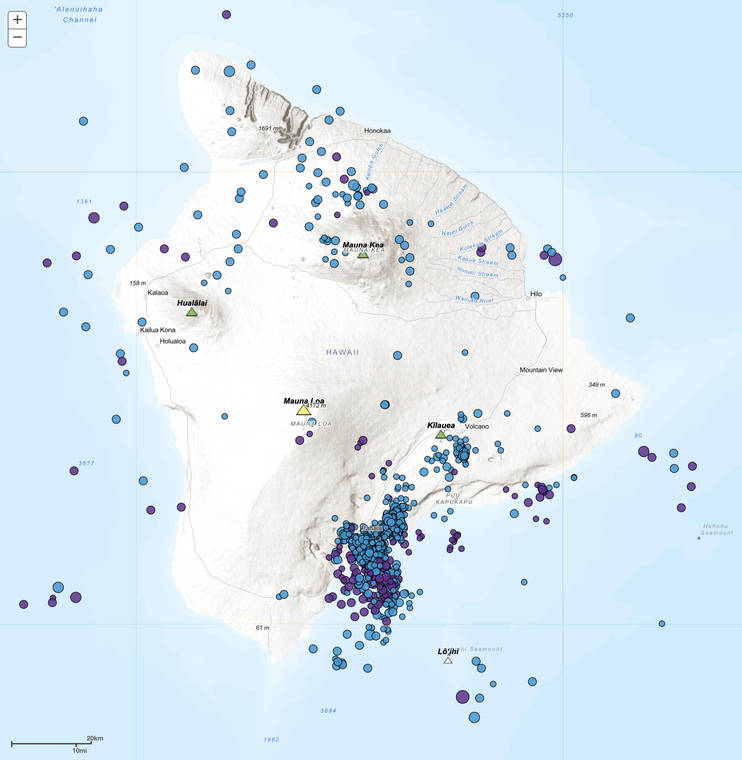Report finds failures in county’s lava response
Hawaii County has released a report largely critical of its own response to the monthslong eruption of Kilauea volcano in 2018 in which Halemaumau crater threw ash 30,000 feet into the air, lava destroyed a 716 homes and structures in lower Puna, and hundreds of residents were displaced.
Chemical analyses shed light on possible origins of island ash deposits
The origin(s) of volcanic ash deposits on the Hawaii Island have been an enigma, especially those found on and between Kilauea and Mauna Loa. We know that ash is from explosive eruptions, but the question has been from which volcano?
HVNP’s Thurston Lava Tube reopens
After more than a year of closure, the Thurston Lava Tube in Hawaii Volcanoes National Park is once again open for visitors today.
Endangered plant survives volcanic hotspot, but is challenged by invasive species
Portulaca sclerocarpa (also known as Ihi makole) is a critically endangered small succulent plant in the purslane family (Portulacaceae). It only occurs on Hawaii Island and on a small islet off the coast of Lanai. It can be found in various sites in Hawaii Volcanoes National Park, including the Puhimau thermal area.
Hula about more than dance movements
For Kumu Hula Lona Warner, who started Halau Makanani in her Kailua-Kona carport at age 63, hula is about more than dance movements. Its about life and mana.
People and jobs at HVO, Part 5: Geologists rock!
Continuing with the Volcano Awareness Month theme of people and their work at the USGS Hawaiian Volcano Observatory, we move on to another role at HVO that of geologist.
M-4.2 earthquake recorded on Kilauea Volcano’s south flank
The U.S. Geological Surveys Hawaiian Volcano Observatory recorded a magnitude-4.2 earthquake beneath Kilauea Volcanos south flank on Sunday evening.
People and jobs at HVO, Part 3: The shaky work of HVO seismologists
When I was 7 years old, I won my countys earthquake safety poster contest. I remember going to a special award luncheon with the mayor, who complimented my work and gave me an Earthquake in a Can toy. Little did I know how much that event would influence my life.
Thurston Lava Tube could reopen soon in Hawaii Volcanoes National Park
The long-closed Thurston Lava Tube in Hawaii Volcanoes National Park could reopen within a month if a final repair project goes smoothly.
Volcano Watch: HVO people and jobs, Part 3 — Geochemistry
As many residents of the island of Hawaii can attest, volcanic gases can stinkliterally. But for those of us at the USGS Hawaiian Volcano Observatory (HVO) who are lucky enough to study those gases, our jobs are actually pretty amazing.
Who and what is the scientist-in-charge?
Todays article, written by HVO Scientist-in-Charge Christina (Tina) Neal, is the second in a series of articles about HVO people and jobs during Volcano Awareness Month 2020. Next week, another HVO team will write about its work.
Honoring the career and contributions of a dedicated HVO geophysicist
HILO On March 30, 2018, a change occurred within the ranks of the USGS Hawaiian Volcano Observatorys staff when geophysicist Asta Miklius retired.
HVO scientists mentor STEM students at national conference
About a month ago, I attended the 2019 National Diversity in STEM Conference, an annual meeting organized by the Society for Advancement of Chicanos/Hispanics and Native Americans in Science (SACNAS) and held in Honolulu this year.
Hilo had a close call from the 1881 Mauna Loa lava flow
HILO Over the last two centuries, six lava flows erupted from Mauna Loas Northeast Rift Zone and advanced toward Hilo.
Volcano Watch: Pondering the pond — what Halemaumau water chemistry tells us
HILO In the tradition of Hawaiian Volcano Observatory founder Thomas Jaggars innovative field methods, HVO recently used a cutting-edge technique to sample the Halemaumau water lake deep within Kilaueas collapsed summit crater.
Volcano Watch: DOH updates Ambient Air Quality Data website
HILO Information about air quality is important to Hawaii residents, particularly those living on the Island of Hawaii, where volcanic activity can lead to frequently-changing environmental conditions.
Volcano Watch: Why is the 2018 lava still so hot?
HILO As roads are recut into Kilaueas 2018 lava flow field, many have been surprised at how hot the lava remains under the surface, even though it is solidified. Why is it still so hot? The short and simple answer is that lava insulates itself very well.
Volcano Watch: High-altitude station maintenance on Mauna Loa
U.S. Geological Survey trucks pull off the shoulder of Mauna Loa Observatory Road before dawn. I park the Jeep at the helicopter staging area, a flat rubble strip flanked by aa lava. The air is cool and thin at 10,000 feet altitude. Our field crew of six from Hawaiian Volcano Observatory (HVO) keep warm unloading gear. We clear the landing zone for the inbound pilot. We organize packs, tools and equipment by checklist for the helicopter.
Volcano Watch: What was that ship doing by the 2018 lava deltas?
HILO In late September, East Hawaii residents with ocean views may have noticed an unusual ship too small for a cruise ship, too big for a fishing boat sailing just offshore of the 2018 lava deltas along the Puna coast. It also entered Hilo Harbor, where it deployed several smaller boats that canvassed the bay within the breakwall.
Volcano Watch: Why do so many deep earthquakes happen around Pahala?
The USGS Hawaiian Volcano Observatory (HVO) detects tens of thousands of earthquakes each year. Currently, one of the most active areas of seismicity is Kilaueas lower Southwest Rift Zone. This area produces numerous deep earthquakes, mostly at depths of 5-25 miles beneath the town of Pahala and extending about 6 miles offshore.


